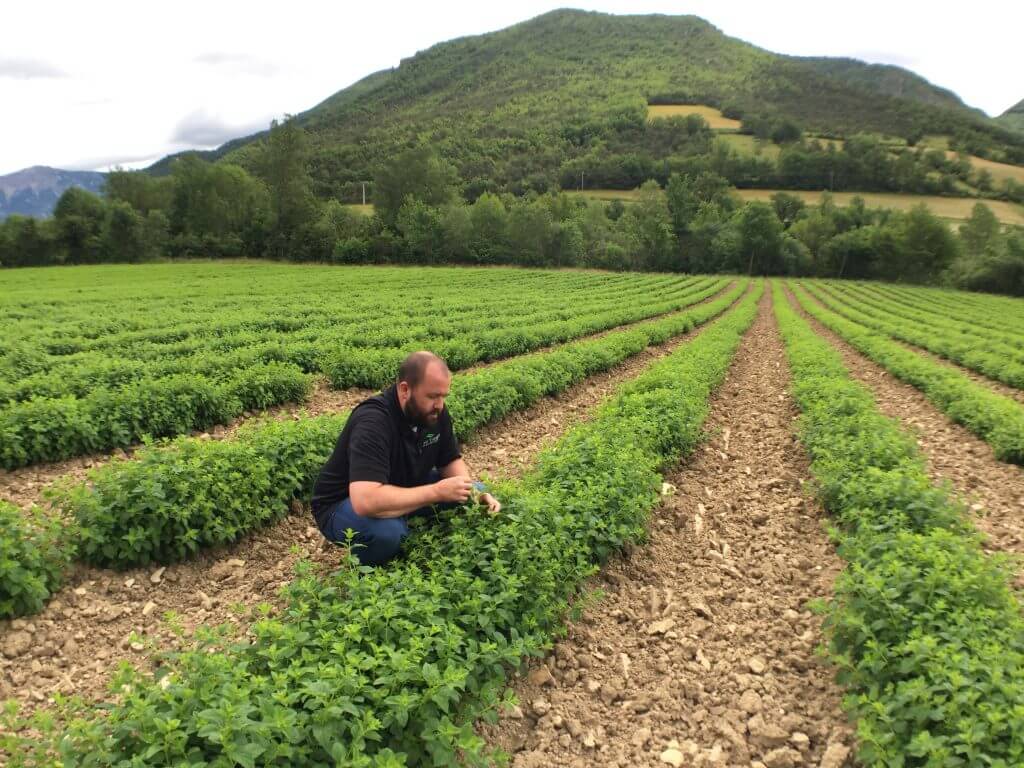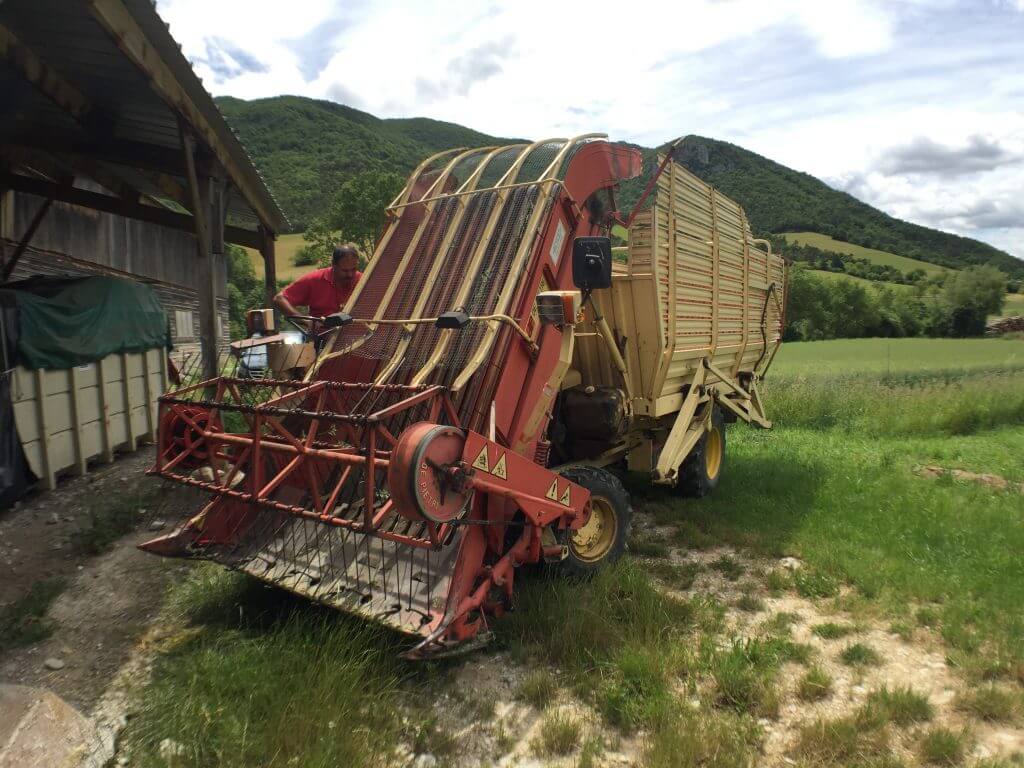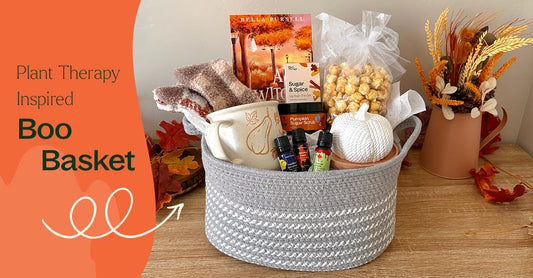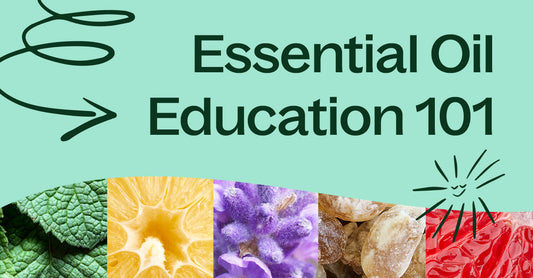I was recently able to visit both France and Morocco, with the intent of checking out some of the farms that are producing our oils as well as their distilleries, and meet with some suppliers. I was not disappointed. I brought Paul, Plant Therapy’s Vice President, and my 12-year-old daughter, Alexa. This kind of international travel can be exhausting but I feel like we accomplished our mission and I want to share some of it with you.
In France we saw the following oil producing crops:
After arriving in Paris and spending the first day and a half visiting traditional tourist destinations (Eiffel Tower, Louvre Museum, Café de Flore, etc), we took the high speed train out to Valence (roughly 400 miles).
We were greeted by our supplier and we drove out into the countryside to visit his farms and distilleries. This was incredibly beautiful. Just like you see in the movies.
They don’t have lots of farms that are hundreds of acres like we have in Idaho. Their farms are much smaller. Many are only 3-5 acres tucked into a hillside. The first farm we visited was only one hectare (2.5 acres) of Melissa along with some other crops, including corn flower and some lemon thyme.
They will harvest 8 tons of fresh plant material to yield one kg (2.2 lbs) of essential oil. They are pleased with this result but still working on getting a higher yield. Just a few years ago it required 12-13 tons of fresh plant material to yield one kg of Melissa essential oil. By working with the local research program and continually selecting only the best plants, they have been able to increase their yields. The next stop was another field of Melissa that was just planted this spring. They will get a small harvest this fall, but won’t yield much. The Melissa plant can be kept up to 7 years before they have to rotate crops. The highest yield years are from 3-5. After that time the weeds begin to become worse and the maintenance costs are too high. They rotate these crops on a minimum 12-year rotation. 5-7 years in Melissa, 2 years in wheat, then another 5 years in alfalfa.
We drove up into the mountainous areas, passing through the many vineyards and wineries that produce the famous Clairette wines. We saw both Lavender and Lavandin varieties during the day. Lavender and Lavandin are naturally growing plants. The main difference is that lavender has one spine but many flowers. Spike lavender has many spines but few flowers. Lavandin is a naturally occurring hybrid between the two which basically has the spines of spike lavender and the flowers of true lavender yielding a lot more oil per plant, which in turn makes it less expensive. It was discovered by a pharmacist who named the plant after himself.> When we got up into the hills we visited amazingly beautiful Melissa fields. The entire valley that these fields are in has been certified organic for over 30 years. There are very few weeds and the crops grow incredibly well.
We went further up into the hills and took a short walk to a field of thyme. They had just harvested this the week before and the smell of Thyme oil was very pungent. It didn’t look great due to the recent harvest.
Next, we visited the drying warehouse and harvesting equipment.
They use this machine for non-woody plants like Melissa (it won’t work on woody plants like Lavender, Thyme, Rosemary, etc.). The plant material is cut by blades on the front, which you can’t see in the photo because they have been removed, and it runs up a belt into the hopper. They drive the machine right into the warehouse where it is unloaded and moved around by overhead cranes on beams. If they are making the crop into a tea, they will put it on drying tables and blow air up from below. If they are being distilled, they will harvest it and take it to the distillery the same day. Outside this warehouse we saw some Clary Sage plants.
These plants are just volunteer and got here by hitching a ride on the harvesting equipment when it left the field. For some plants the oil molecules are on the outside of the plant on the trichome, while others are inside. For Clary Sage, I was able to zoom in with a lens attached to my phone and get some up close photos of the oil itself.
As we continued on we visited scotch pine (Pinus sylvestris) and Juniper trees. These are wild harvested in the area. They are also certified organic because they are growing on organic wool farms. When the farms need to clear some land for more sheep grazing they will call this essential oil distiller and they will harvest the trees rather than just using them for firewood. For the pine they will chip up the branches and needles, but for the Juniper they will do just the bark. It is chipped up into ½” chips and then steam distilled. They will then return the distilled plants to be composted on the land. They are very acidic and the land is naturally alkaline so it works well.
In this large distillery the trucks will back into the upper floor and dump the plant material on steel plates. They use an overhead crane to load the large hoppers.
The large hopper is 5,000 liters and can hold roughly 8 tons of fresh plant material. The smaller one is 3,000 liters and can hold approximately 6 tons of material. One thing that is unique about this distillery vs the others that I have visited, is that these units are heated by exchange, rather than direct steam. What looks like a boiler is actually full of heated mineral oil, which then heats the water that is pumped into the bottom of the vessel. It was originally set up like this because it used to be against organic regulations to introduce direct steam to the plant, because they include anti-oxidant agents to the water to prevent calcium buildup which could cause an explosion. It is also quite efficient. Once they heat the oil up it will maintain a high temperature for 24 hours. Once the plant material is finished they will use an overhead crane to remove the sieve from the hopper and dump it into a waiting truck to be composted.
The actual distillation will not take long- maybe an hour- but then the cleanup and changeover process takes around 6 hours to complete. If they harvest more than they can distill in one batch, they must spread the plant material out so it doesn’t get too hot. If it is left in a pile, it will start to become hot enough within an hour that it will start to distill on its own and the oil will be lost. If they suspect storms are coming they will harvest a couple of days’ worth and spread it out to distill during the storms.
We were then taken to the processing plant where we ate lunch. Our host had ordered the following 4 pizzas: salmon, goat cheese, ravioli, and some type of spicy meat with peppers. I am not a particularly adventurous eater, but we all got full.
This is an impressive facility with many moving parts. Because they are a pharmaceutical grade facility, they have very stringent rules. We were required to suit up before moving on.
They have a full in-house testing facility and elaborate samples storage system. When the bulk oils are brought in they get checked in, samples taken and then get put into a large cone tank. They let them settle for 48 hours then drain off the bottom of the tank to remove any sediment and/or water left over.
They will then pump the oil out through a filter to remove any small particles. Depending on the oil it will then be put into drums and moved into cold storage which is kept at 41 degrees Fahrenheit.
They also distill products on site. Some essential oils as well as hydrosols.
The hydrosols have their own section of the plant and are processed in a similar way, except that they are filtered through a much smaller micron filter and also UV filtered. I was also intrigued by their custom designed and built mobile distillation units. They have one smaller unit that can go on a large roll-off truck (pictured) and a much larger one that fits on 3 semi-trucks. They will drive these units right out into the field and harvest and distill right on site. This is a unique concept and a bit revolutionary. It is run by a large diesel generator and the only thing they need from the farm is fresh water.
After returning to the office to discuss business, we were taken back to the train station where we headed back to Paris.
We stayed the night in Paris and left for Morocco the following morning. Stay tuned for that blog post in the future!
Chris Jones
Plant Therapy


































